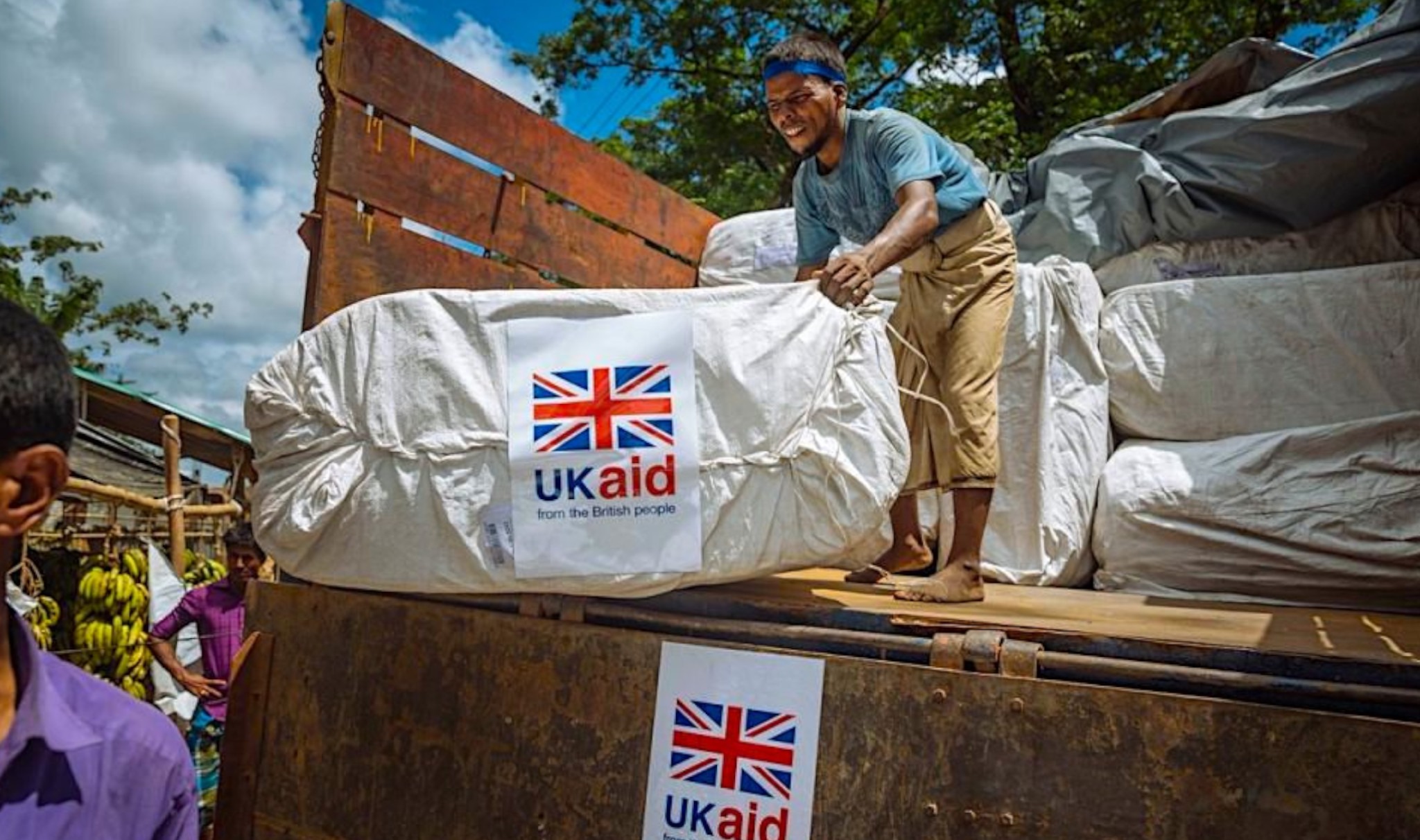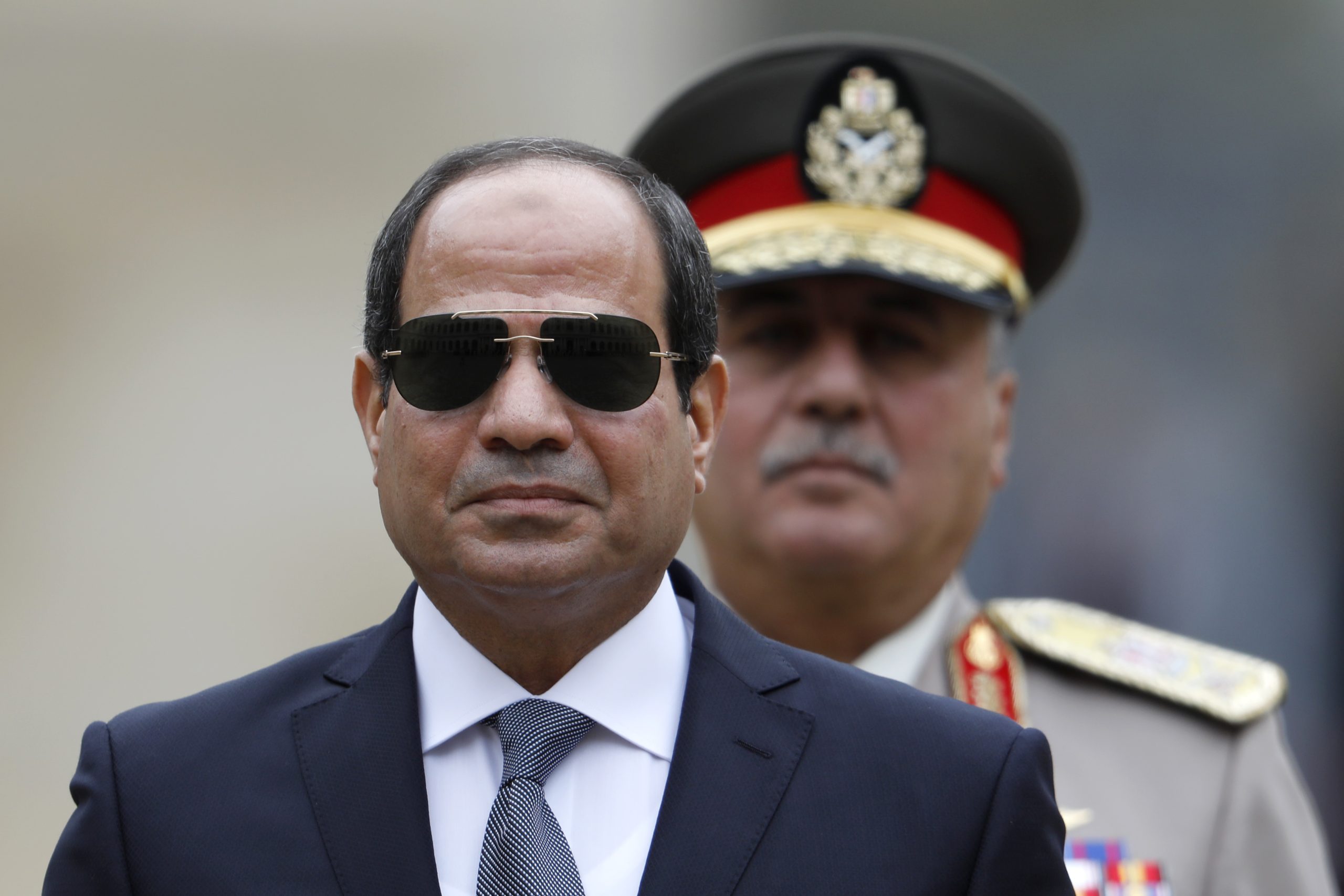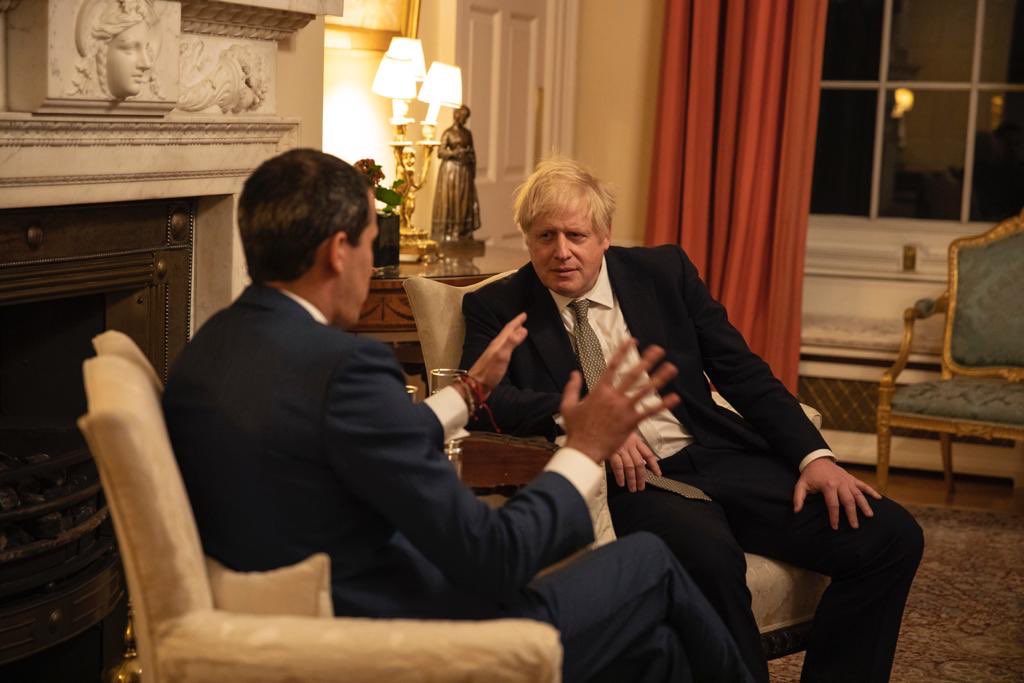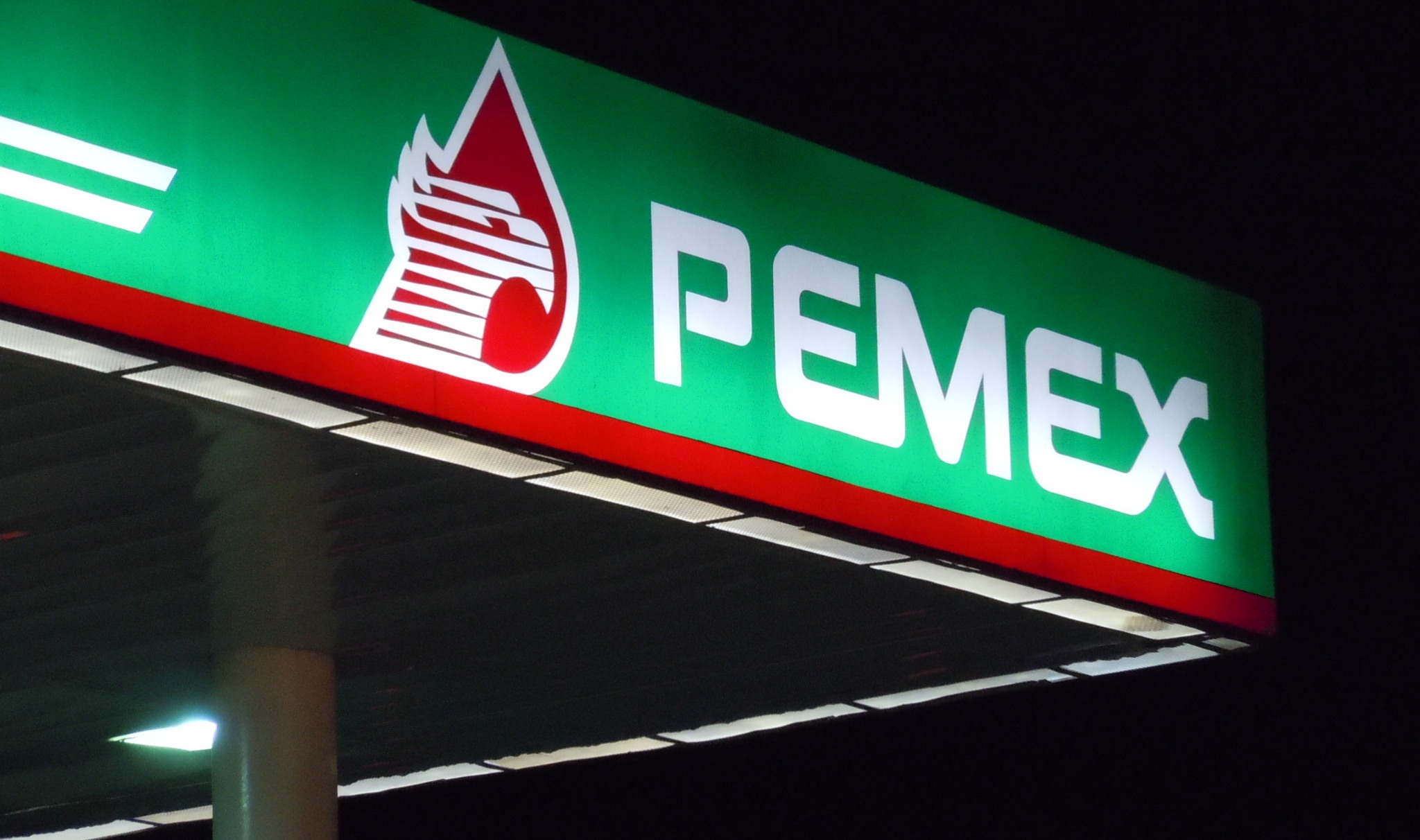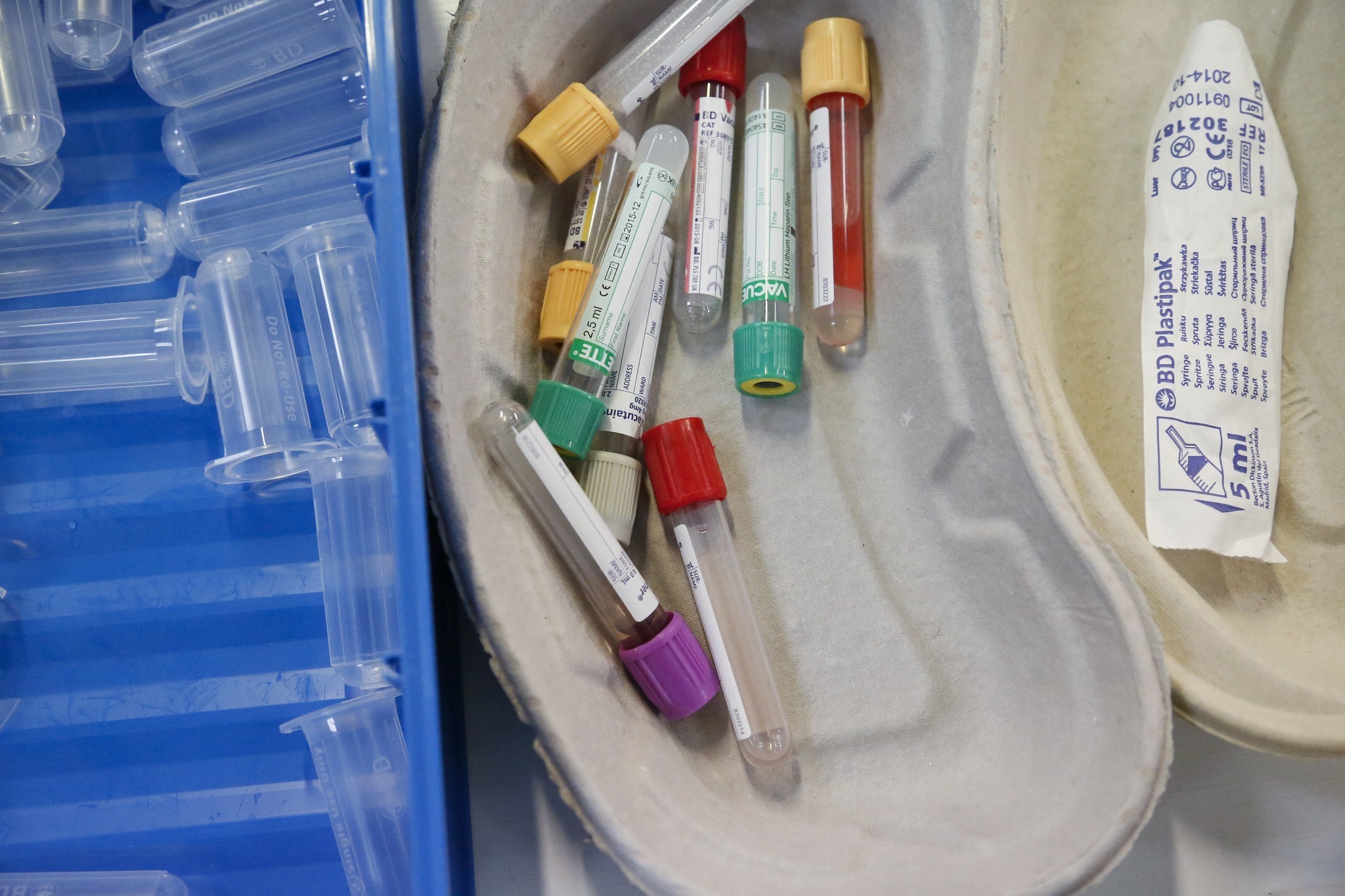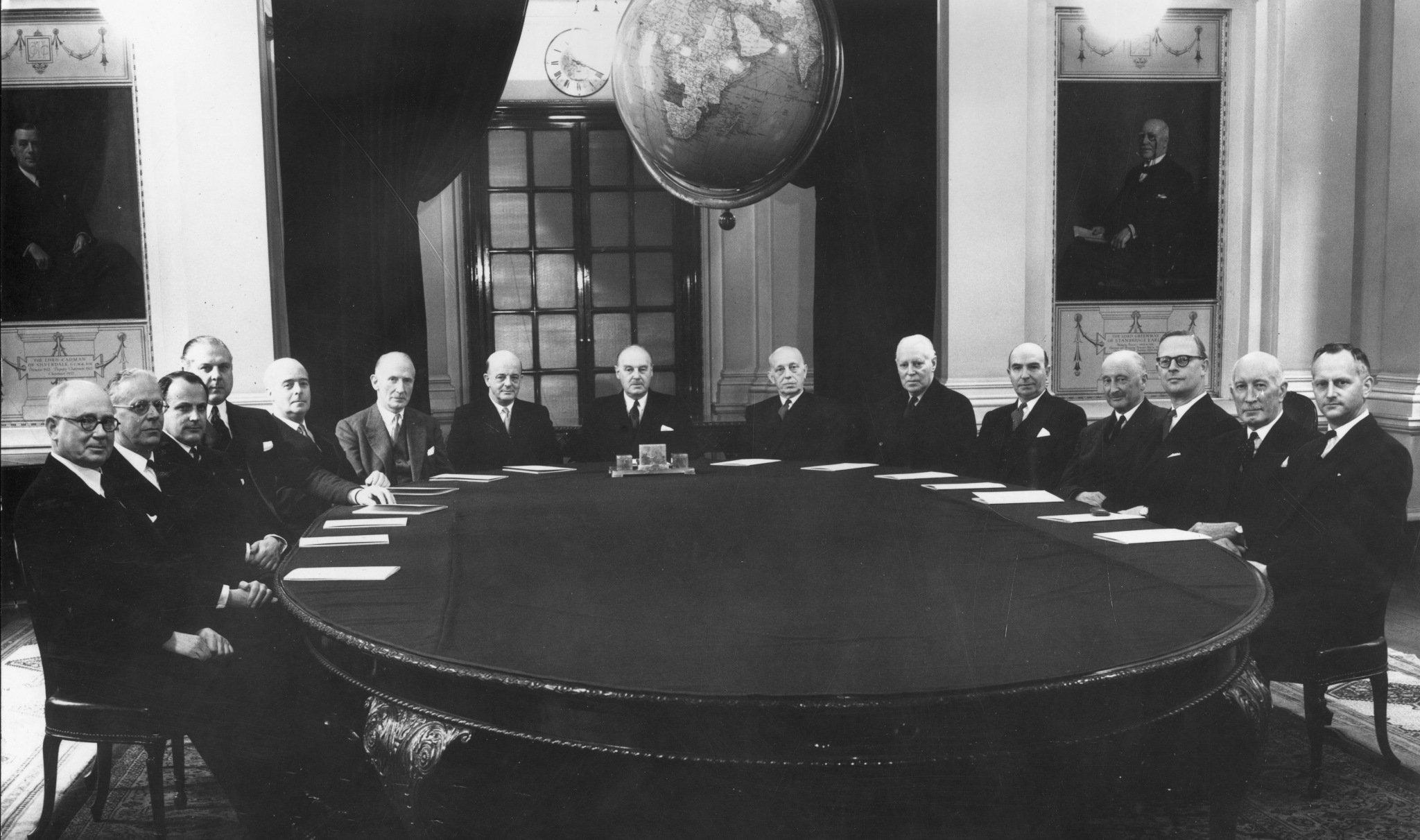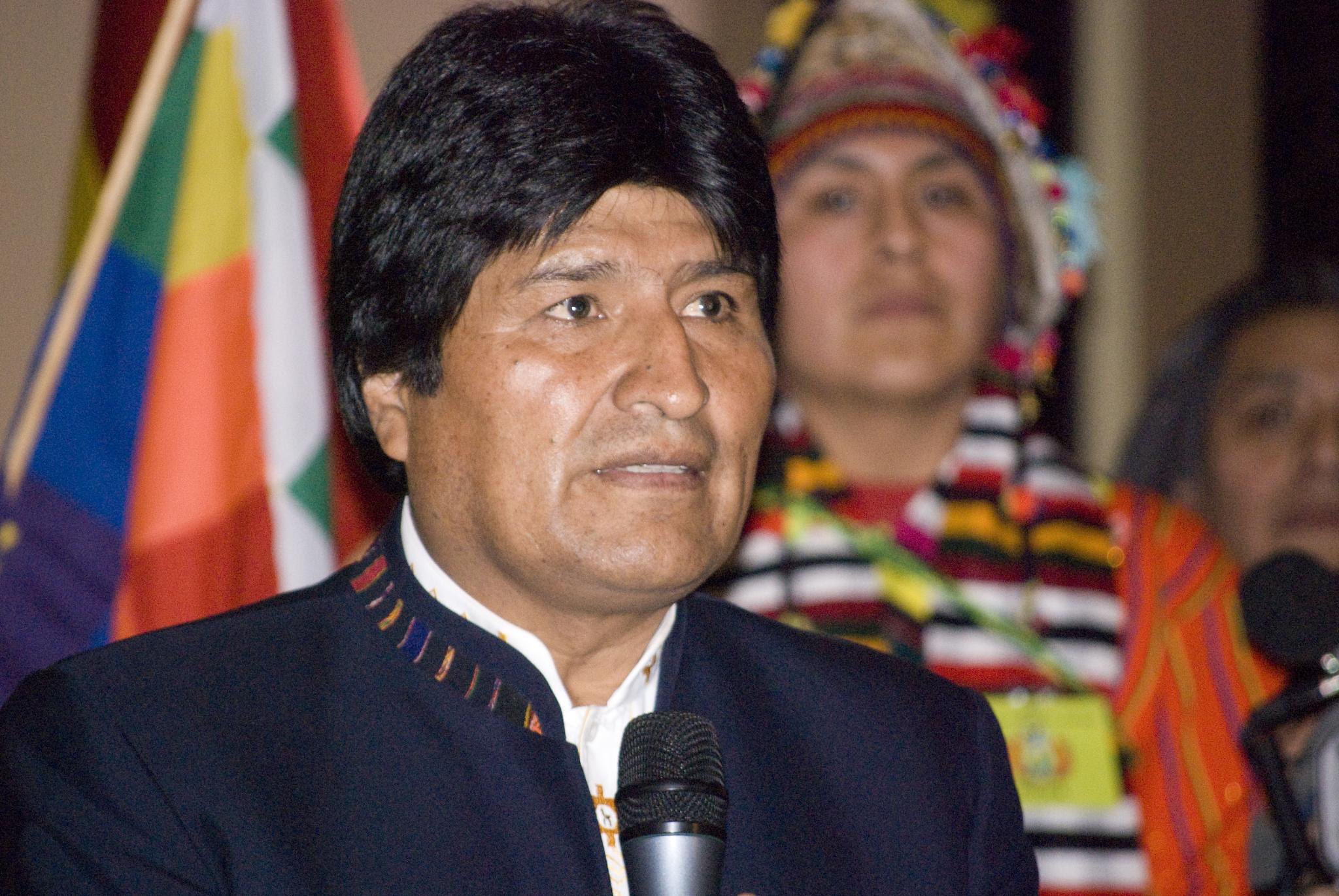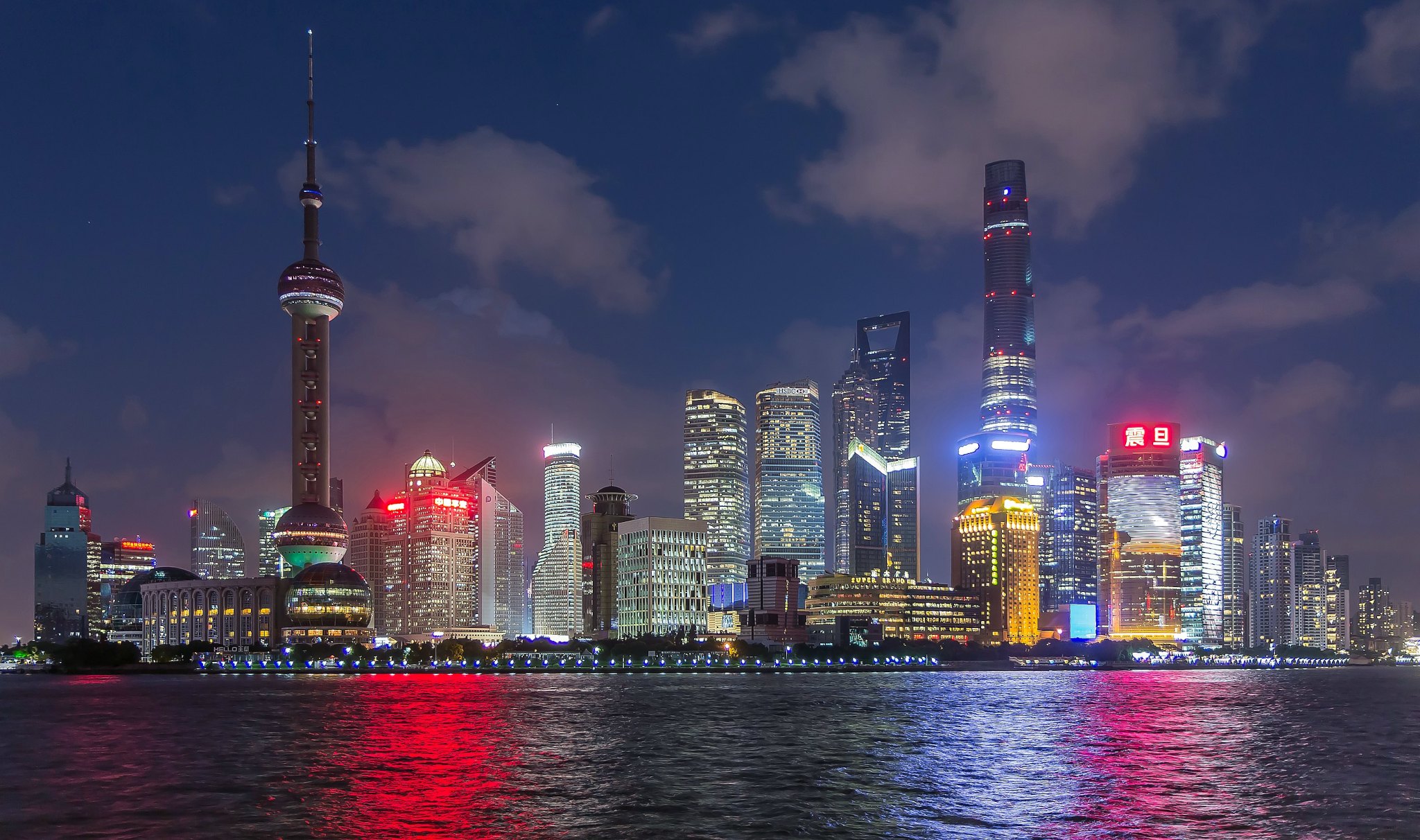Like many of our peers heading to summer music festivals, we got up at the break of dawn and took a train out of London. We were also en route to an event that would have many thousands of people. We were going to see one act in particular – and we were anxious about whether we’d be able to get good seats close to the stage.
But there’d be no mosh pits and wellies where we were going: north to Liverpool, for the 2014 International Festival for Business. Its main sponsor – then Prime Minister David Cameron’s Conservative government – had advertised it as “the UK’s most significant international trade and commerce showcase since 1951”.
It would be “an outstanding opportunity for businesses to forge new international commercial partnerships”, Cameron said. “There couldn’t be a more fitting host than Liverpool”, he added, as it had “powered Britain through the Industrial Revolution”.
This was correct: in the 19th century the port city was a key hub for industry and international trade, and for a period its wealth rivalled London’s. But much of the city’s prosperity had been driven by one of history’s most condemned businesses: slavery. Over the 18th century, its ships carried an estimated 1.5 million Africans across the Atlantic. For decades, it accounted for between 30-50% of Liverpool’s trade.
It was an organised barbarism. An international ‘triangle trade’ shipped goods like textiles and guns from British factories to Africa; slaves to America and the Caribbean; then sugar, cotton, and rum back to Europe. Banks and industries mushroomed to respond to the ‘opportunity’ of this trade. Liverpool boomed.
This history is still echoed in some of the city’s street names. Penny Lane, made famous by The Beatles, is thought to be named after the prominent slave trader James Penny. Other streets were named after abolitionists. Restored warehouses by Liverpool’s historic docks now house an International Slavery Museum. That was the area of the city where we went, as quickly as possible, after our train pulled into the city.
Our destination, the Cunard Building, was built during the First World War to be the headquarters for a company whose luxury passenger steamships ferried elites across the seas. It was partly styled after Italian palaces, complete with marble imported from Tuscany. We walked up dramatic stone stairs leading to the building’s main entrance.
‘Here to help’
The International Festival of Business’s multi-week programme had sessions catering to companies and entrepreneurs in specific sectors from shipping to education, as well as those eager to expand into specific world regions. Many of these events, including the one we’d come for, were organised by UK government officials.
We walked into a historic ballroom with period detailing and vaulted ceilings. Men in business suits sat at circular tables with pristine white table cloths. We spotted two empty seats, took them and smiled. Our table was indeed close to the stage.
“What’s it worth?” asked the man who soon appeared at the podium.
Answering his own question he said there was “$70 to $100 billion of business out there”, to which some of the people in the room clapped. He grinned.
The amount of money he was talking about was vast, and comparable to the estimated size of the global cybersecurity – or magazine publishing – markets. But this event was focused instead on a trade that few people have ever heard of.
“Welcome to the world of aid-funded business.”
Nigel Peters was the man on stage. He was then head of a little-known government unit called the Aid-Funded Business Service, which was set up to help UK companies win contracts funded by public money to help the world’s poorest people.
“The development and humanitarian aid business is there, it’s significant business, and we’re here to help you win some of that”, he told the room, standing by a screen with a projected slide bearing the names of different agencies – including United Nations agencies, the World Bank, and US and UK government departments.
“Welcome to the world of aid-funded business”, he beamed.
“We see a lot of business opportunities around the work the UN does in peacekeeping, famine relief, disaster relief, emergency aid,” Peters explained, giving examples: “We see a lot of good opportunities, for those of you in products, in terms of famine and disaster relief related to both man-made disasters, which today we’re seeing in countries like Syria and Iraq with refugee camps, and of course natural disasters.”
The men around us clapped again. It was striking that these crises involving the deaths and displacement of many people seemed like reasons for good cheer.
‘Feel good factor’
Eleanor Baha, his colleague, also seemed upbeat when she took the stage. Based in Geneva, amid one of the largest clusters of United Nations agencies, she was described as an “attaché” for the UK’s Aid-Funded Business Service.
“Why should you be looking at UN business? What’s the point?” she asked, and answered: “Well, for you as companies it’s a good export market”.
“There’s a definite ‘feel good’ factor” that companies can get from working in this industry,” she said, but “perhaps most importantly, you are sure to get paid…The UN only places business with companies when the budget is already secure”.
After our trip to Liverpool we took another train from London – this time to Brussels, the unofficial capital of the European Union, to go to AidEx, which called itself a “major platform for networking, making new contacts and doing business”.
Inside a large convention centre, hundreds of business suits swarmed around exhibition stalls, some of them sipping glasses of wine. On tables were glossy corporate brochures and items like USB keys stamped with companies’ logos. Hanging from the high ceiling were banners of major car companies – Ford, Toyota, Volkswagen.
“There’s a definite ‘feel good’ factor that companies can get from working in this industry.”
Company reps at their stalls pitched goods and services at the host of acronyms – of NGOs, government agencies like USAID, and UN organisations – that together spend billions of dollars a year around the world. On offer was everything from types of tarpaulin to the services of private security firms. In a pop-up café, attendees huddled in small groups, comparing notes on who had won what business the previous year.
AidEx said that exhibiting at its event helped companies “raise brand awareness,” “generate new leads,” and “receive personal PR services.”
A two-minute promo video on YouTube, with a cheerful pop soundtrack, illustrated the point. “How are we going to sell all of these products?” asked a cartoon figure in the video. A light bulb appears over the head of another figure, who suggests: “Why don’t we exhibit at AidEx?” As cartoon shipping crates pile up on screen, he proclaims: “There will be buyers there who want to buy all of THIS!”
We hadn’t heard much about the fight against global poverty – the official mission of aid spending. On our train back to London, we wondered: why was the world of aid-funded business so little-known? Aid is taxpayer money, and politicians often talk about it. So why were the companies who target these budgets usually off-screen?
The reality of aid
What is aid? ‘Money given to help the world’s poorest’, taxpayers who ultimately foot the bill are repeatedly told. Both supporters and critics of aid seemed to similarly talk about it as if it were a direct transfer of cash from richer to poorer countries.
The Daily Mail, for example – a notorious aid critic – had launched a petition on Valentine’s Day, 2014, urging the government to “divert some of the £11bn a year spent on overseas aid to ease the suffering of British flood victims”. One of its signatures, a novelist from Gloucestershire, commented: “We give millions of pounds in aid to India and China and never spend on our own. It’s ridiculous”.
Aid opponents had repeatedly made the same argument: that the UK was wrong to “give”, “send”, even “pour” so much money into other countries each year. Aid supporters seemed to use similar language, presenting aid as a sort of international social security system that redistributes wealth from the world’s rich to its poor. Politicians routinely did this too, pledging to “give” aid “to” specific countries.
But it was more complicated than this and, as we saw in Liverpool and Brussels, companies were among the beneficiaries of these budgets.
The truth was that only a small fraction of aid money was ever transferred directly to local governments or groups in poorer countries. Instead, much of it took a while to get anywhere – passing through sometimes very long chains of contractors and subcontractors. Far from simple transfers of cash, when donors pledge aid money, there was no guarantee it would ever make it to the countries it was supposedly ‘for’.
Only a small fraction of aid money was ever transferred directly to local governments or groups in poorer countries.
There were written rules, overseen by the Organisation for Economic Cooperation and Development (OECD) club of rich countries in Paris, to govern what spending could count as official development assistance (ODA) – the formal term for “aid”.
Such spending was supposed to have “the promotion of the economic development and welfare of developing countries” as its main objective. The rules were detailed – but they also allowed donors to use their aid budgets for things you might not expect.
Donor governments could ‘give’ aid as loans that had to be paid back with interest (thus making money off of them). They could count ‘debt relief’ as aid even if these were just debts that were cancelled or rescheduled, not new flows of cash.
According to OECD data, millions of pounds of UK aid never left the country, and was instead spent on things like military training for African officials, and a “study visit” to the UK for North Korean officials. For years the UK had also counted pension payments to former colonial officers as aid – at a cost of £2m in 2017 alone.
Poor decision-making
‘Budget support’ was the technical term for aid that was given directly to poorer country governments, to manage and spend themselves. It amounted to $9.5bn in 2014 – less than 6% of total global aid spending that year ($165 billion).
And the rest of this money? Most of it was routed through a web of international agencies, NGOs, and for-profit contractors and subcontractors. Much of it was used to buy things, or services, from companies based in richer, not poorer, countries.
This is where the business we saw upfront in Liverpool and Brussels came in. For companies in this industry, a humanitarian crisis seemed like an opportunity, while development aid served as a steady and reliable revenue stream.
The complicated rules that governed what spending can be counted as aid meant that it was hard to compare two aid dollars without knowing details of how they were spent. One may have gone directly to a poor government. The other may have gone to a private contractor who provided goods or services while making a profit off of it.
For companies in this industry, a humanitarian crisis seemed like an opportunity.
Despite this, politicians and aid critics and supporters alike often focused on a topline target to spend 0.7% of gross national income (GNI) on aid a year. Repeatedly re-endorsed at international summits since the 1970s, this target became a key benchmark by which donor ‘generosity’ was publicly measured.
Sweden, Norway, Denmark and the Netherlands had met it in the 1970s. Luxembourg followed in 2000. But the UK was the only G7 country to have done so, in 2013, when its total foreign aid budget reached £11.4bn. In 2015 it enshrined this target in law (though in 2021 it would reduce this spending to 0.5% of GNI, citing the economic impact of COVID-19).
Some experts argued that this target was arbitrary, outdated, and that it was based on old calculations of how much money developing countries needed. The UK parliament’s international development select committee warned that pressure to meet spending targets, no matter what, could result in poor decision-making.
But this attention to 0.7% also seemed like a distraction, a way to focus attention on overall budget figures while missing the details of how this money is spent.
In 2015, a new UK aid strategy would come out explicitly prioritising overseas development projects and spending that could “strengthen UK trade and investment opportunities”. Aid would increasingly be spent on projects to write ‘business-friendly’ laws, and support private investment in areas from infrastructure to agriculture.
The involvement of for-profit companies in spending aid money also seemed to make it harder to follow this money to the ground. Government guidance said bids for aid business should include breakdowns of overheads, salaries, and profit margins. But if this information was indeed collected it was not published and rarely came to light.
Margaret and Mahathir
When Margaret Thatcher died in 2013, she was honoured with a ceremonial funeral at a cost to taxpayers of more than £3m. It was held at St Paul’s Cathedral, where just a few years before, Occupy London had established its protest camp.
Queen Elizabeth II was only one of several very high-profile people who attended the funeral. Also among the foreign invitees was Mahathir bin Mohamad, who had been prime minister of Malaysia at the same time as Thatcher in the UK, though for much longer. He stayed in power until 2003, then took over again in 2018, at the age of 93.
We’d noticed his name on a list of the guests because, a year before Thatcher’s death, a former senior civil servant published an insider’s account of the 1990s Pergau Dam aid-for-arms scandal. It was this scandal that ultimately led to a new law to “untie” UK aid from commercial interests and make sure it focused on poverty reduction.
UK aid for a new hydroelectric dam on Malaysia’s Pergau River was used to ‘sweeten’ contracts with British arms companies.
The scandal concerned exchanges between Thatcher and Mahathir’s governments – and the use of UK aid for a new hydroelectric dam on Malaysia’s Pergau River to “sweeten” contracts with arms companies including British Aerospace (since renamed BAE Systems), which sold the country dozens of military jets.
The insider account, The Politics and Economics of Britain’s Foreign Aid: The Pergau Dam Affair, was written by Sir Timothy Lancaster. He’d been a civil servant at the Treasury department when this deal was secretly struck, and had sent a private memo to his superiors warning that it could “create acute embarrassment to ministers and wasteful public expenditure”.
Then, when he subsequently took over as permanent secretary of the Overseas Development Administration (ODA), the agency in charge of the aid budget at the time, he advised against this spending going through.
Lancaster thought the proposed aid-funded project didn’t make sense on its own terms as he believed there were cheaper ways for Malaysia to produce energy. He took the unusual move of insisting on a formal ministerial ruling before signing off on its budget, signalling that he suspected something was wrong, and ultimately prompting a series of investigations into it, which came from the National Audit Office and major newspapers.
‘Devotee of privatisation’
The cover of Lancaster’s book recounting this period, published in 2012, features a snapshot of the two prime ministers at the centre of the scandal, before it erupted. Malaysia’s Mahathir looks straight at the camera, in a grey suit and mauve tie. Thatcher is beside him, in a black dress. The pair appear relaxed, and on a table before them are two tea cups, left (or positioned) there to reflect an amicable meeting.
That photo was taken in April 1985, during a 10-day tour of Asia by Thatcher in which she met with Mahathir and publicly praised him for believing, as she did, in “the advantages of the free enterprise system and the liberalisation of world trade”.
It was the first official visit by a UK prime minister since the former British colony became independent in 1957. It also followed what she would later call “a bit of a sticky start” to her relationship with Mahathir. He had adopted an explicit ‘Look East’ policy and had said that his country would from then on buy British products only “when it is absolutely necessary”, showing “a definite preference for non-British sources”.
Thatcher had travelled to Kuala Lumpur amidst efforts to woo Mahathir back. A speech she gave in the city was peppered with praise for his leadership. “I am delighted to find, Prime Minister, that you too are devotees of privatisation and reducing the role of the state”, she said. “I admire your catchphrase ‘Malaysia Inc’”.
“I am delighted to find, Prime Minister, that you too are devotees of privatisation.”
She added: “Many of our companies are keen to do more business with Malaysia and I shall be doing my very best to convince you of all the merits of our companies in particular”.
At a separate press conference during that visit, she pointed specifically to the UK construction giant Balfour Beattie, which later be involved in building the Pergau dam. She also named Unilever, a giant British multinational ‘consumer goods’ company whose products include snacks and soap, and whose history would later provide us with a unique window into that of the aid and development system and how it works.
By the time parliamentary inquiries began into the ‘Pergau Dam Affair’, Thatcher had left government and the House of Commons, though she continued to lobby for big businesses. She reportedly received $50,000 per speech and worked, for example, as a “geopolitical consultant” for the tobacco company Philip Morris. She would have been an obvious witness for the Pergau inquiries, but she refused to give evidence.
In Malaysia, the ‘Pergau Dam Affair’ led to a new public sector boycott of British contractors. In the UK, a powerful civil society campaign demanded that aid focus on ending poverty in developing countries, not supporting companies at home.
In 1994, an NGO called the World Development Movement launched a landmark legal case in the UK High Court against the government’s aid agency, arguing that its decision to support the Pergau dam had been unlawful. The court agreed.
This scandal became the key case for the creation of a new aid agency – the Department for International Development – with its own ministerial post. An International Development Act, passed in 2002, required that all UK aid spending have the reduction of poverty as its primary focus. Aid was formally “untied” aid from UK commercial interests, opening up aid-funded contracts to international competition.
Tied aid
Many aid donors, we learned, “tied” some of their aid spending, officially restricting competition for contracts to companies based in their countries. In the US, a small group of contractors, primarily based in the Washington, DC area, and known as the ‘Beltway Bandits,’ had long dominated the USAID agency’s aid-funded business.
US food aid, which fell under the department of agriculture, showed a similar pattern with a small group of companies dominating the business. Among them were the huge grain traders Cargill, ADM, and Bunge. They had won the lion’s share of the contracts to provide wheat and other commodities to be shipped from America to poorer countries on US-flagged ships. (The shipping industry also benefited.)
The UK – because of the Pergau dam affair and the actions taken afterwards – was now supposed to be different. It was meant to be buying more of its goods and services locally, in developing countries. Which made sense – if the goal of aid was long-term and sustainable development – as this business could help local economies grow.
But, in 2011, the NGO that had led the legal challenge against aid for the Pergau dam sounded the alarm again, after then development secretary Andrew Mitchell reportedly linked aid to India with ambitions to sell BAE Typhoon fighter jets to the country.
More than 90% of UK aid contracts still went to British companies.
A few months before Lancaster’s book came out, there was a new flurry of stories in the UK press about a small group of British, private consultants taking home six, even seven, figure salaries funded by multi-million pound aid contracts.
In 2014, according to UK government figures, more than 90% of contracts still went to British companies (or British subsidiaries of multinational companies). This was sometimes called – within specialist circles of aid-watchers – ‘boomerang aid’.
UK aid-funded contracts were also getting larger, and harder for small companies to bid for. Companies were providing daily support, ‘technical assistance’ on specific projects, and designing and delivering huge programmes over many years. Increasingly they were being hired as ‘managing agents’, selecting and overseeing other contractors. They also conducted research and evaluated the results of aid projects.
A group of just 11 companies, it turned out, were winning the bulk of these UK aid-funded contracts, and they seemed to have special access to the Department for International Development. Then top official Mark Lowcock wrote in an article for Supply Management magazine that his department had created “an arena for frank discussion” to develop plans together with its “largest strategic suppliers”.
Not one of these top contractors was from a developing country. The multinational accountancy giant PricewaterhouseCoopers was among them, along with big European consultancy firms. Many were from the UK, including Adam Smith International, founded in 1992 by admirers of Thatcher and her thirst for privatisation. Another was Crown Agents, a business which could trace its history back to 1833.
One empire to another
We were intrigued by Crown Agents’ birth during colonialism and started to dig into its history. In May 2003, a small group of protestors had gathered on Buckingham Palace Road, in central London. They handed out pamphlets to passersby and unfurled a banner that said: “Agents of War and Greed”. This little-known company was their target. It was still busy “facilitating imperialism”, they said, in “that murky area between state and business that has become so central in the new age of corporate government”.
What prompted that protest was Crown Agents’ involvement in Iraq following the US and UK invasion. It was named by the BBC alongside US construction giant Bechtel as part of “a fairly narrow coterie of international firms” that had developed a specialism for “post-war clean-ups”. The Independent said it became “the first British company to win a contract in the American programme to rebuild Iraq”.
Crown Agents was one of the biggest UK aid-funded contractors. It was also likely the oldest, having transitioned from being merchants of empire in the 19th century to the ‘postcolonial’ development business. Its website said it has been “innovating since 1833” and had a long history of “accelerating self-sufficiency and prosperity”.
The Office of the Crown Agents provided the empire’s middlemen.
The Office of the Crown Agents, as it was previously known, provided the empire’s middlemen: if colonial governments needed to buy something, they set it up. They fell under the supervision of the Secretary of State for the Colonies, but operated independently, managing colonial investments and the supply of all non-locally made goods, as well as supervising construction projects, paying salaries and pensions.
David Sunderland, a British business historian who wrote an in-depth study of the agents called Managing the British Empire explained how their business expanded between the late 1800s and early 20th century – with their staff increasing, for example, from around 30 people to more than 460. They also outsourced work to other contractors, and employed a shipping agent, packing company and solicitors.
Their strategy was initially to provide costly though quality services, according to Sunderland. But over time, they became “more concerned with income maximisation”. They began using their connections within the UK government, he said, “to influence policy for their own benefit, leading to the construction of costly and uneconomic railways, the issue of high cost loans, and the purchase of expensive supplies”.
After empire
When the British empire collapsed, Crown Agents lived on and became a statutory corporation focused on the international aid and development industry. In 1997 – more than 150 years after its creation – it was privatised and converted into a limited company (which was wholly owned by a foundation, at least for now).
At the time of Crown Agents’ creation in the early 19th century, ‘chartered companies’ – associations of private investors and traders that were forerunners of modern corporations – were exploring, trading and colonising different areas of the world. Probably the most famous of these was The East India Company, which had its own flag and a private army twice the size of Britain’s. This “dangerously unregulated private company,” according to William Dalrymple, who wrote a book about it, “executed a corporate coup unparalleled in history”, conquering much of India.
That company would also take over parts of Southeast Asia and Hong Kong, while others colonised parts of the Americas and Africa. The 1884 Berlin Conference, which infamously formalised the colonial ‘Scramble for Africa’, would help them. Among other things, it said that a mere claim to territory was not enough for international recognition. Colonisers had to prove authority over the areas they claimed, through “effective occupation”. Chartered companies were willing and eager to do this.
“This dangerously unregulated private company…executed a corporate coup unparalleled in history.”
In west Africa, from 1886 the Royal Niger Company brought together British interests in the Niger delta region. It had its own police as well as customs, courts and prisons. In the early 20th century it would become part of the broader United Africa Company (UAC) – and then Unilever, the British multinational ‘consumer goods’ company that Thatcher would mention in one of her 1980s speeches in Malaysia, and which would also become involved in post-colonial development projects.
When the British empire ended, we were learning, its infrastructure did not similarly disappear. Instead, some of it seemed to have been reoriented – or more simply rebranded – under the ‘development’ banner. The aid industry had very deep roots. So did the issue of big companies being among its beneficiaries.
Investing in empire
Then UK Prime Minister Harold Macmillan famously stated, in a 1960 speech at South Africa’s parliament, that “the wind of change is blowing through this continent, and, whether we like it or not, this growth of national consciousness is a political fact.” He was right.
By then, the British empire had already lost India, Pakistan and what are now Sri Lanka and Pakistan as well as Ghana. After nearly four centuries of colonial activity, it collapsed in little more than two decades after the end of the Second World War.
“The upsurge of colonial nationalisms after 1945 meant that policy-makers were overtaken by events,” argued W. David McIntyre, a historian from New Zealand who studied this period. But we were coming across plenty of evidence suggesting that businesses, investors and those in government who worked with them knew what was coming – unstoppable peoples’ movements for freedom and independence from unaccountable powers – and started laying plans for continued expansions regardless.
Before the World Bank and its different branches were established, for example, in 1946, the UK set up its ‘development finance institution’ CDC (initially called the Colonial Development Corporation). Its mission was to improve “the standard of living of the colonial peoples by increasing their productivity and wealth”. Bringing Britain benefits, amid a struggling post-war economy, was also a clear objective.
Before the World Bank was established in 1946, the UK set up its own ‘development finance institution’, the CDC.
Addressing a meeting of colonial governors not long after this institution’s founding, Sir Stafford Cripps, then Minister for Economic Affairs, said that it was time to “force the pace” of colonial economic development and argued that the UK’s future depended “on a quick and extensive development of our African resources.”
After the Second World War, Britain’s economy was struggling and the government took huge loans from the US which were only fully paid off in 2006.
“This is the world background against which the productivity of the colonial territories must be viewed”, Lord Trefgarne, CDC’s first chairman, stressed to a group of businessmen in Liverpool, in 1948. It was “sound policy” in this context, he insisted, to build up colonial economies and increase exports of their products.
That the UK should benefit from this new institution’s international ‘development’ activities was perhaps not surprising given that it was still an arm of the colonial empire. But like Crown Agents it didn’t close down when the empire did. It was re-positioned to help newly-independent countries to ‘develop’ by investing in businesses there.
New justifications
From the 1950s, ‘development’ became a dominant theme in corporate advertising in Africa, according to Stephanie Decker, a British academic who called it a cunning “publicity strategy”. But it would have been a particularly important tactic, she said, for those companies “that had been closely associated with the British empire” and “needed to find a new justification for their continued presence”.
Within the UK government, a new Ministry of Overseas Development aid agency was set up after the Colonial Office was disbanded in the mid-1960s. The CDC, meanwhile, was renamed the Commonwealth Development Corporation, though it soon began investing in non-Commonwealth countries too. It resisted Thatcher’s privatisation drive in the 1980s and remained a public corporation until after she had left office.
In 1999, the British parliament passed an act to transform it into a limited liability company – CDC Group plc – though all shares would still be owned by the government. A few years later, however, its management functions were spun off into two new companies that were sold to private owners, including former CDC managers: Aureos for smaller venture capital funds and Actis, for the bulk of its remaining portfolio.
From the 1950s, ‘development’ became a dominant theme in corporate advertising in Africa.
These changes prompted criticism from politicians and the media over the “impossibly low” prices paid for these spin-offs. Shortly after, then development secretary Andrew Mitchell applauded CDC’s financial success but said it had “become less directly engaged in serving the needs of development” and should be reformed.
In 2011, a new business plan was launched and CDC began making direct investments again – rather than relying on intermediaries to spend its money – and said it would focus more on poorer countries. Years after, however, it still seemed easier to pinpoint its elite beneficiaries than its impacts on helping to end poverty globally.
‘Dominance’
In El Salvador, for example we saw one of the projects built by a company that had received ‘development finance’ from the UK’s CDC. It was on the outskirts of the capital, San Salvador, and behind thick concrete walls. Villa Veranda: a 34-acre gated community with more than 500 beige, brown and coral pink houses lining freshly-paved roads with amenities including a football field and basketball court—and thick, green grass even in the dry season.
The cheapest homes inside this enclave started at $117,650 and required a household income of at least $2,000 a month. This made them far from affordable for most people in the country, where about a third of the population lived below the national poverty line of $5.50 a day. “Being a construction company dedicated exclusively to the construction of houses for the middle class has given us dominance in that segment,” boasted the website of Avance Ingenieros, the company behind it.
Its fortunes had been buoyed by growing numbers of Salvadoran bankers, bureaucrats and businessmen, and by a rise in Salvadorans living abroad buying property here for their families or retirement. It had received a $3.3 million investment in 2004 from the UK’s CDC development finance institution.
While the enclave clearly was not targeted at the world’s poorest, its projects were also criticised locally for the pressure they put on water resources. Environmentalists said the rapid development of forests around San Salvador was replacing the capital’s ‘lungs’ with concrete, asphalt and luxury homes out of reach for most people.
“What surprises me is their idea of development.”
Yanira Cortez, at the state’s human rights office, told us “mega projects” like this one had “severe impacts on the environment and on water resources, and were not respecting the rights of future generations”.
A local group near Villa Veranda called the Northwest Santa Tecla Ecological Defence Committee had also warned that this specific development could threaten local water supplies, biodiversity and quality of life for communities nearby.
The company said in response that they modified their plan to reduce the number of houses, include more green space, and invest hundreds of thousands in local social programs. But Edith Tejara from Acua, a Salvadoran environmental NGO, told us it was still shocking that any international development money had supported such gated communities.
“History has taught us that whenever a shopping mall or gated community is built, water will be prioritised for them and not the local people”, she said.
“What surprises me,” she concluded, “is their idea of development”.
This an edited extract from Silent Coup: How Corporations Overthrew Democracy which is out this month from Bloomsbury Academic.

